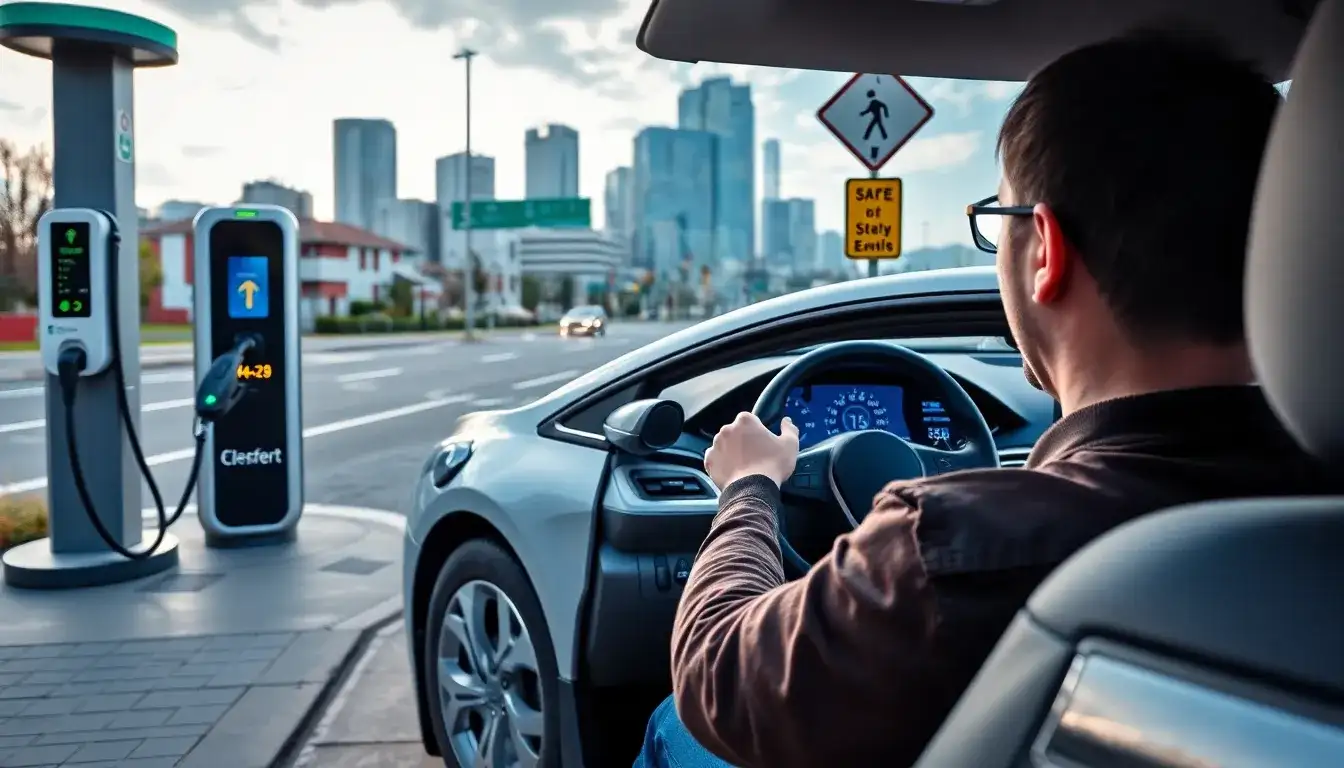
Guide to Safe Driving for New Energy Vehicles
1. Safety Issues with New Energy Vehicles
The safety of new energy vehicles (NEVs) is a significant concern. Compared to traditional vehicles, NEVs have unique safety features. Here are some key points regarding their safety:
- Battery Safety: NEVs primarily rely on battery packs for power, making battery safety crucial. Overheating, short circuits, damage, or improper use of batteries can lead to fires or explosions.
- Charging Facility Safety: Charging facilities for NEVs must meet safety standards to ensure user safety. Poor circuit design or equipment failures can pose risks such as electric shocks and fires.
- Autonomous Driving Technology Safety: Some NEVs come equipped with autonomous driving technologies, which present their own safety concerns. Failures in algorithms, sensors, or hardware can result in the vehicle misperceiving its environment or making incorrect decisions, leading to accidents. Therefore, reliance on autonomous systems should be tempered.
- Vehicle Structural Safety: The structural design of NEVs also needs to prioritize safety, including features such as the body structure, seat belts, and airbags. In the event of a collision, these safety configurations should adequately protect passengers.
2. Key Safety Considerations for New Energy Vehicle Users
When driving a new energy vehicle for the first time, it’s important to familiarize yourself with the vehicle’s performance and driving style, which typically takes about two weeks. During this adjustment period, maintain high alertness to ensure your safety and that of others. It is advisable for new drivers to gently press the accelerator and drive cautiously, always prioritizing safety.
The electric motors in NEVs produce significant torque, allowing for rapid acceleration. New drivers should gradually increase speed to adapt to the vehicle’s quick response. Additionally, while driving on city roads, closely monitor the traffic conditions to prevent accidents caused by sudden acceleration.
Because electric vehicles are quiet when starting, pedestrians may not notice them, increasing the risk of accidents. Therefore, it is essential to stay alert, especially in narrow, crowded areas, and closely watch for pedestrians to ensure safe driving.
1. Preventing Chassis Collisions
In pure electric vehicles, the power battery is often installed on the chassis. Hence, it is crucial to pay attention to road conditions, especially on bumpy roads, to prevent chassis collisions. The power battery is a core component of the NEV and must be treated with care. When navigating bumpy areas, reduce speed to avoid bottoming out. If bottoming out occurs, check for safety immediately and prevent further damage.
2. Avoiding Misoperation
When driving pure electric vehicles, especially in single-pedal mode, caution is necessary. Misoperations can occur if drivers confuse the accelerator for the brake. It is vital to distinguish between regenerative braking and actual braking, and to use the brake pedal when necessary for safety. Additionally, understanding emergency procedures while driving is essential.
3. Responding to Severe Weather
In adverse weather conditions like rain or snow, the narrow tires of NEVs can easily slip, and their strong acceleration capabilities may pose safety risks. Therefore, drive cautiously in such conditions and avoid sudden acceleration. Since the battery is typically located at the bottom of the vehicle, do not drive through standing water carelessly. Carefully observe the traffic conditions of vehicles and pedestrians before entering a flooded area, ensuring the water level does not exceed half the tire height before proceeding smoothly.
4. Dealing with a Power Outage
If you run out of battery on the road, remain calm and follow these steps: First, safely maneuver the vehicle to the emergency lane or pull over. Second, to avoid rear-end collisions, place a warning triangle about 150 meters behind the vehicle. Finally, ensure all passengers exit the vehicle quickly and orderly for their safety. Following these steps will help you handle a power outage situation effectively.
5. Responding to Fire Incidents
If you encounter a fire while driving, it is crucial to stay calm. Quickly open the doors or use a safety hammer to break a window to create an escape route. After ensuring the safety of yourself and passengers, locate the emergency power cut-off switch to disconnect the main power and prevent the situation from escalating. Immediately call the fire department and provide details about your vehicle model and battery type to assist responders. Wait patiently in a safe area for professional help to arrive. After the incident, document key information such as the fire’s origin and the vehicle’s condition, and contact your dealership and insurance company for battery handling, repairs, and claims.
3. Daily Safety Tips for New Energy Vehicle Owners
- Avoid Battery Overheating: Battery overheating is a critical safety issue for NEVs. It can lead to explosions or fires. Owners should avoid prolonged vehicle usage, especially in high-temperature environments.
- Regularly Check Charging Equipment: Ensuring that charging equipment meets safety standards and following proper charging protocols are vital for NEV safety.
- Monitor Battery Levels: Always check the battery level, ensuring it is fully charged before long trips, and avoid operating the vehicle with a low battery for extended periods.
- Avoid Overcharging: Overcharging can cause batteries to overheat, so it’s crucial to avoid this and disconnect the charger promptly.
- Pay Attention to Braking: While NEVs feature regenerative braking systems, owners should still be mindful of brake usage to maintain vehicle stability.
- Regular Maintenance: Regular maintenance is essential for ensuring NEV safety. Owners should timely replace lubricants and brake fluids and check mechanical and electronic systems.
- Follow Traffic Regulations: Like conventional vehicles, NEVs must adhere to traffic rules. Owners should respect traffic signals, pedestrians, and other vehicles, and avoid speeding or illegal parking.
Important Reminder: Always choose charging stations that comply with national safety standards, and stay away from flammable and explosive materials to mitigate safety risks.







